RECOMMEND
Foot disease
Neotech's products are recommended
by fitting symptoms


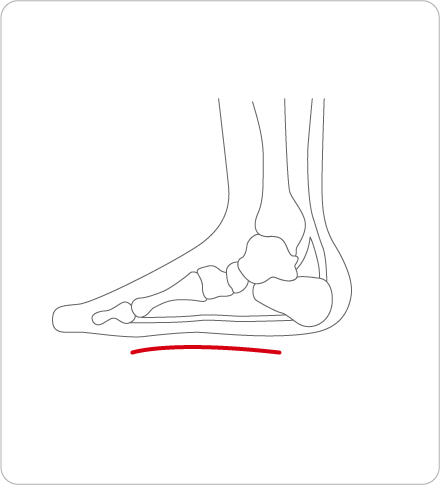

Flat feet Pes Planus
Flat feet means feet with no flexion on the sole and a flat shape. It is a common foot deformity in which the inner arch of the sole is abnormally lowered or lost. It is largely divided into flexible flat feet and rigid flat feet, and causes can be found in genetics, lifestyle, wrong shoe selection, obesity, overuse of the feet, and trauma. Flat feet put a lot of weight on the inner side of the foot, causing pain and fatigue easily even when walking a little, and it is inconvenient to do long-time activities. If the foot is subjected to unbalanced pressure due to wrong walking habits, it can cause shoulder pain, back pain, knee pain, and even headaches as well as foot pain. Therefore, by raising the inner arch through an orthotic insole, flat feet are corrected and fatigue is reduced even after walking for a long time. You can see the effect of doing it.
RECOMMEND
Orthotic/functional insoles, comfortable diabetic shoes
Recommended
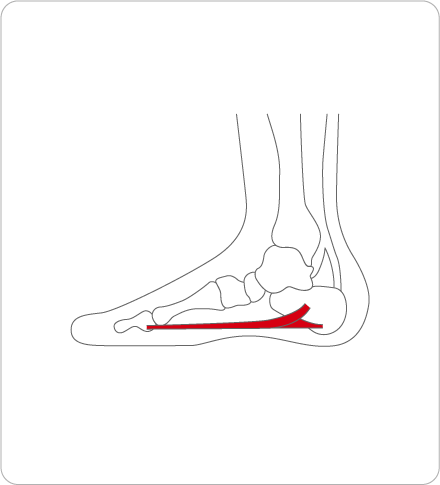

Plantar fasciitis Planus Fasciitis
The plantar fascia refers to a thick and strong fibrous band that starts at the heel bone, called the calcaneus, and attaches to the base of the toe by giving out five branches toward the front of the sole. Plantar fasciitis is an inflammation of the plantar fascia caused by repetitive micro-tears. In addition to being overweight and standing for a long time, inflammation can occur in situations such as flat or too concave shape of the sole, inability to walk or exercise well, strained Achilles tendon or shortened calf muscle .If treated early, most can be cured, but if it lasts for a long time, the pain is relieved by absorbing the shock applied to the heel through the orthotic insole to act as a cushion.
RECOMMEND
Orthotic/functional insoles, comfortable diabetic shoes
Recommended
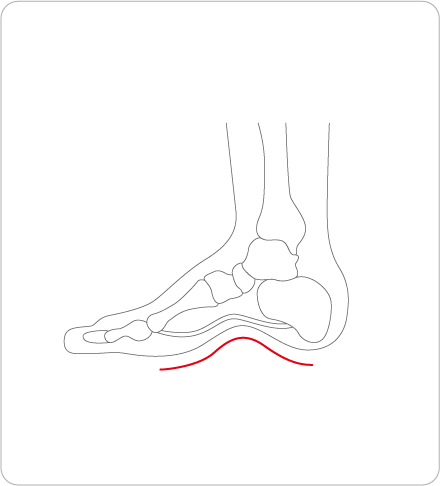

Hige Arch Pes Cavus
Convex foot refers to a condition in which the arch on the inside of the sole of the foot rises higher
than the normal range.
This shape of the foot restricts pronation, which naturally rotates inward when the foot touches the
ground when walking, and as a result, the foot receives a large impact from the ground. The most common
cause of convoluted foot is plantar flexion deformity of the metatarsal fissure of the first toe. It
also appears in women who wear a lot of high heels. As the arch is raised, the instep is also higher
than normal, so it is recommended to wear shoes that are appropriate in length and wide. In addition,
the orthodontic insole reduces the burden on the joints, ligaments, and muscles that support unstable
feet so that the feet can work efficiently and comfortably.
RECOMMEND
Orthotic/functional insoles, comfortable diabetic shoes
Recommended
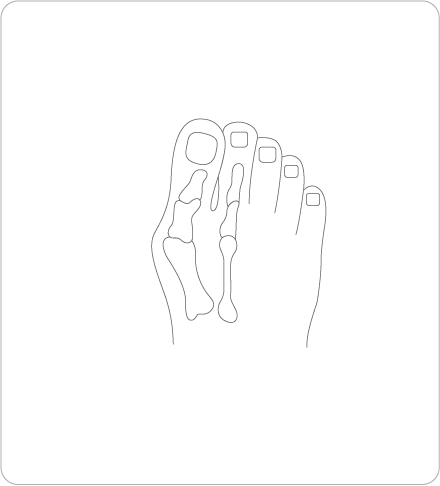

Hallux Valgus Hallux Valgus
Hallux valgus is a deformity in which the big toe is excessively bent toward the second toe, and the
metatarsal bone that forms the joint with the big toe is biased inward on the contrary. The cause can be
a combination of congenital and acquired factors. Congenital factors include excessive distal metatarsal
joint surface angle, flat feet and wide feet, and excessively flexible feet. Acquired factors include
shoes This is often the case with narrow nose shoes or high-heeled shoes such as high heels.
When the big toe is bent, the protruding bone comes into contact with the shoe, causing calluses and
inflammation, causing pain.
Wear wide, comfortable shoes to reduce irritation to the toes and shoes, and insert
corrective insoles to prevent irritation to the protrusion of the big toe and the bottom of the second
and third toes.
RECOMMEND
Orthotic/functional insoles, comfortable diabetic shoes
Recommended
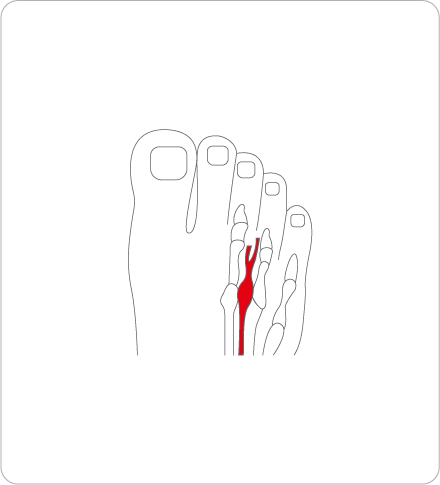

Interdigital neuroma Morton’s Neuroma
It is a disease in which the nerve that goes from between the metatarsal bones to the toes becomes thick due to constant stimulation and pressure, resulting in damage to the nerve and inflammation around it. It usually occurs in the second and third toe spaces. It occurs when the nerves going to the toes are repeatedly compressed between the ligaments between the metatarsal bones and the sole of the foot when the foot is lifted off the ground while walking. Nerve compression symptoms are aggravated by wearing uncomfortable shoes such as high heels. It is recommended to maintain appropriate body weight and avoid excessive exercise, and insert orthotic insoles to widen the gap between metatarsal bones and reduce nerve stimulation by reducing pressure.
RECOMMEND
Orthotic/functional insoles, comfortable diabetic shoes
Recommended
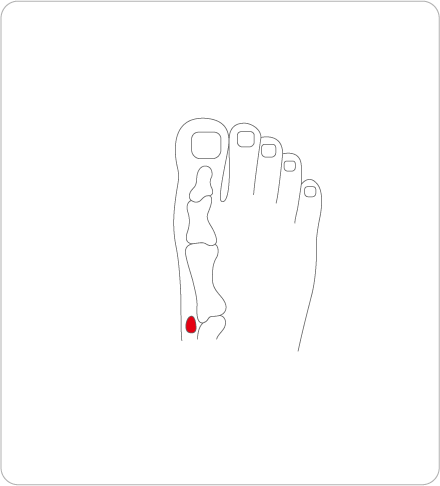

Subnavicular syndrome Accessory Navicular
It is a disease that causes pain in the bone (scaphoid bone) located at the bottom of the anklebone. Also referred to as ‘accessory bone’, subscapularis is often asymptomatic and is often discovered incidentally during simple radiography. It usually appears in adolescence between the ages of 13 and 15, but when you play sports that put constant pressure on your feet, such as basketball or ballet, the scapula can be compressed, causing pain and swelling. If you do not feel any discomfort, there is no need for treatment, but if the pain persists, you can reduce the pain by inserting an orthotic insole that protects the ankle and fixes its position.
RECOMMEND
Orthotic/functional insoles, comfortable diabetic shoes
Recommended
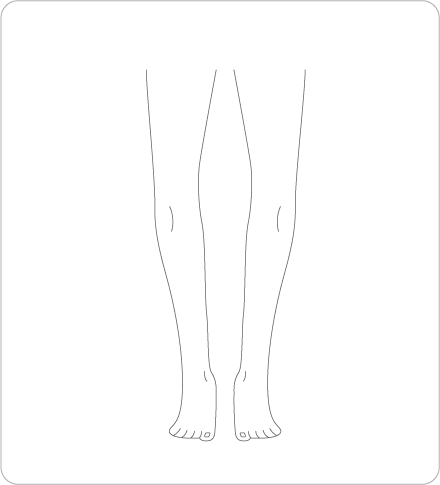

O-leg Genu Varum
When the center of the knee joint is placed outside, the knee joint is bent outward in an arch shape, and if the knee distance is more than 5 cm, it is severe. Causes include childbirth, cross-legged posture, cross-legged habits, and frequent wearing of high heels. If this is neglected, secondary deformations such as deformation of the knee, foot, and spine may occur, and it may cause various diseases such as degenerative arthritis in old age. O-legs can be corrected naturally by raising the outside of the foot, which receives a lot of load, through the orthodontic insole.
RECOMMEND
Orthotic/functional insole - ORTHOTIC 02
Recommended
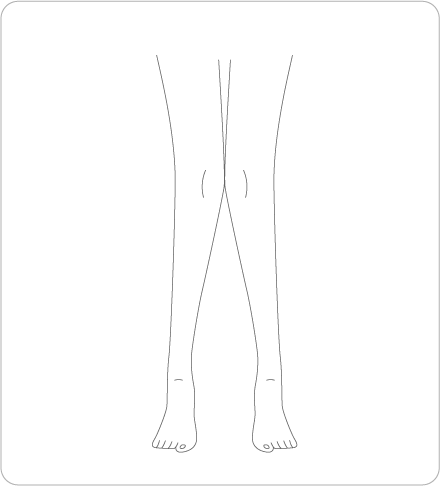

X leg Genu Valgum
X-legs are called valgus valgus, and when standing upright, the lower knees do not touch each other and are spread apart in an X shape, and the ankles are spread outward. If the distance between the ankles is more than 5cm, it is considered severe. It usually affects both legs, but can also occur on one side only. If an adult has severe hallux valgus, degenerative arthritis can occur due to strain on the knee joint, so body shape change can be prevented by raising the inner arch, which bears a lot of weight through a correction insole.
RECOMMEND
Orthotic/functional insoles, comfortable diabetic shoes
Recommended
TOP